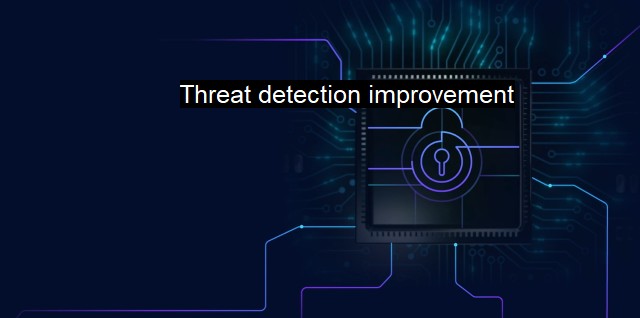What is Threat detection improvement?
Enhancing Cybersecurity and Antivirus: A focus on Threat Detection Improvement to Defend Against Evolving Cyber Attacks in the Modern Era
Threat detection improvement is a critical component of cybersecurity which refers to the enhancement of capabilities in identifying, analysifying and monitoring potential threats and breaches within a security system. The context of this is primarily in the domain of digital security, which is becoming more relevant considering the accelerating digital transformation in business and personal life.In digital security, threat detection is linked with antivirus software, which is designed to identify and obstruct malicious cyber threats. Over the years, viruses and malware have evolved and proliferated, becoming more complex and threatening. Along with this, the significance of the threat detection improvement grows to keep up with ever-evolving threats.
Threat detection improvement in antivirus and cybersecurity involves leveraging cutting-edge technology, strategies and best practices to ensure the early detection and response to both traditional and emerging threats. Generally, cyber threats could include anything from potential system vulnerabilities to the action of malicious software such as ransomware, viruses and worms. The early detection of these threats allows cybersecurity and antivirus experts to respond quickly and mitigate potential damages.
One crucial aspect is the operation of antivirus software that constantly scan a system, file by file, detecting and quarantining any suspicious files that may pose a threat. Most modern antivirus software also comes with real-time threat detection capabilities. Not only does the software perform a routine scan, it safeguards the system against threats even as they are introduced, therefore considerably improving threat detection.
To enhance threat detection, advanced technologies like AI and machine learning tools are deployed which automate routine tasks and decisions and help to detect any unusual patterns of activity. For instance, if there's a sudden influx of network traffic, machine learning can immediately recognize this anomaly and alert cybersecurity professionals before the problem escalates. This self-improving capability enables AI systems to enhance their threat detection capacity, delivering constant improvement in the defense system.
User behavior analytics is another critical tool for advanced threat detection. As opposed to finding threats based on their technical signatures, it focuses on identifying unusual user behavior. For instance, an employee logging in outside of normal working hours would get noticed. It helps in detecting insider threats, identifying compromised credentials, and alerting on account misuse in real-time.
Threat intelligence also plays a role in threat detection improvement by equipping cybersecurity teams with contextual knowledge about current and emerging threats. It helps to inform and shape their proactive stance against adversaries, providing valuable insight into potential risks and steps to take for a comprehensive defense. human analysts undeniably add a valuable layer deciphering subtle threats overlooked by automation.
The integration of threat detection systems into the security platform also delivers seamless coordination of defenses It makes sure the protective programs work together against threats and provide a comprehensive security overview.
Threat detection improvement keeps up with the advancements made by hackers and malicious software day by day. It is an ongoing process of refining strategies, systems and technology to stay a step ahead in these trying times where a single security breach could lead to significant financial loss, reputation damage and legal implications. It's a journey of adaptation and evolution to ensure that the cybersecurity systems we trust, are equipped to protect us from ever-evolving, sophisticated digital threats.

Threat detection improvement FAQs
What is threat detection improvement?
Threat detection improvement refers to the implementation of measures that enhance the ability of an antivirus or cybersecurity system to detect and respond to potential security threats.Why is threat detection improvement important in cybersecurity?
Cybersecurity threats are constantly evolving, making it imperative to stay ahead of attackers by improving threat detection capabilities. By implementing threat detection improvement measures, businesses can mitigate the risk of a cyber attack and protect sensitive data.What are some examples of threat detection improvement measures?
Examples of threat detection improvement measures include implementing artificial intelligence and machine learning algorithms, utilizing behavioral analytics, and conducting regular vulnerability assessments and penetration testing.How can businesses evaluate the effectiveness of their threat detection improvement measures?
Businesses can evaluate the effectiveness of their threat detection improvement measures by monitoring key performance indicators such as time to detection, false positive rate, and incident response time. Consistently reviewing and updating these measures will ensure that the system evolves to meet the constant changes in cybersecurity threats.| | A | | | B | | | C | | | D | | | E | | | F | | | G | | | H | | | I | | | J | | | K | | | L | | | M | |
| | N | | | O | | | P | | | Q | | | R | | | S | | | T | | | U | | | V | | | W | | | X | | | Y | | | Z | |
| | 1 | | | 2 | | | 3 | | | 4 | | | 7 | | | 8 | | |||||||